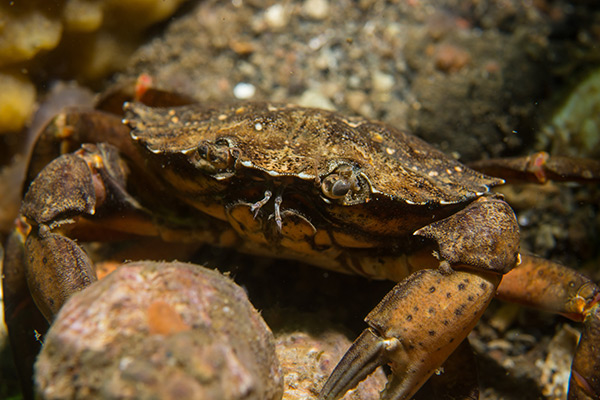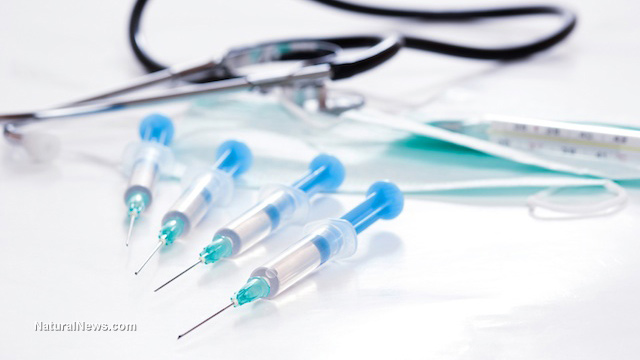
The pharmaceutical industry is depleting horseshoe crab populations along the U.S. Atlantic coast with limited accountability — and serious environmental consequences, NPR reported this week.
(Article by Brenda Baletti, Ph.D. republished from ChildrensHealthDefense.org)
Drugmakers use a product derived from horseshoe crab blood to test vaccines, injectable medicines and medical devices before injecting them into humans. The product tests for the presence of endotoxins, a toxin found in some bacteria that can cause inflammation, fever, sepsis or death.
The horseshoe crabs’ bright blue blood contains a substance called limulus amebocyte lysate (LAL) that detects the harmful bacterial toxins and captures them in blood clots. No other natural substance is known to work as well to detect the toxins.
A synthetic alternative exists, but unlike in some other countries, U.S. regulators have not established standards for its use industry-wide.
That means the key medical test is dependent on a single animal, whose already precarious existence — the International Union for the Conservation of Nature in 2016 listed horseshoe crabs in the U.S. as vulnerable to extinction — can be further threatened by events like the COVID-19 pandemic demand for mass vaccine production.
‘A finite source with a potentially infinite demand’
Scientists discovered the horseshoe crab blood’s unique capacity in the 1960s, and in 1987, the U.S. Food and Drug Administration (FDA) approved the endotoxin test using horseshoe crab blood.
To meet Big Pharma’s growing demand since the 1990s, an industry exploded around the collection and bleeding of the animals. Today, five major corporations harvest the blood along the east coast of the U.S.
The companies harvest the animals when they come to shore to spawn. Crabs caught in nets from trawling and dredging fisheries are not subject to regulations, which creates loopholes that make it possible for the companies to harvest and kill more crabs.
Lab technicians pierce their hearts and drain up to half their blood before releasing the animals back into the sea.
LAL labs claim that the vast majority of crabs recover. But research shows the bleeding appears to make the animals more lethargic, slower and less likely to follow the tides like their unbled counterparts do.
As a result, 30% or more of them die and many others never make it to shore to lay the eggs needed to reproduce the population and that serve as food for a wide range of migratory birds and marine life.
Despite demands for industry regulation by environmental groups, some limited legislative protections and successful lawsuits limiting horseshoe crab harvests in a few key locations, the amount of blood harvested by the multi-billion dollar pharmaceutical industry from the animals grows every year.
The heart of environmentalism is care for vulnerable plants, animals, people, and places.https://t.co/FDDW2fkBEI
— Robert F. Kennedy Jr (@RobertKennedyJr) June 15, 2023
Habitat loss and overharvesting have affected the 475-million-year-old species in the past, but the massive growth of the pharmaceutical industry seriously threatens the species.
The five corporations operating in South Carolina, New Jersey, Massachusetts, Virginia and Maryland reportedly drained the blood of more than 700,000 crabs in 2021, which NPR reported is more than any other year since officials started keeping track in 2004.
Larry Niles, a wildlife biologist and leader of the nonprofit Horseshoe Crab Recovery Coalition (HCRC), which unites different organizations into a single concerted effort to end the killing of horseshoe crabs on the Atlantic coast, told The Defender those industry numbers severely undercount the number of harvested crabs.
Horseshoe crabs are “a finite source with a potentially infinite demand and those two things are mutually exclusive,” Allen Burgenson, of Swiss biotech Lonza, told Agence France-Presse last year. Lonza produces the LAL test and also has developed a synthetic alternative to horseshoe crab blood.
Prioritizing ‘money over the health of the stock’
Horseshoe crabs are one of the oldest species on the planet. They are considered a keystone species, which means many other species depend on the horseshoe crab for survival. Their nutrient-rich eggs are an important food source for migratory birds and marine animals.
The rufa red knot, a federally listed shorebird species at risk of extinction, relies on horseshoe crab eggs for food during its annual 9,000-mile migration from Tierra del Fuego at the southern tip of Argentina to its breeding grounds in the Canadian Arctic.
But pressures from harvesting crabs for bait, habitat loss and biomedical bleeding have led to a 60% crash in the population along the Atlantic coast over the last 25 years. As a result, shorebird and fishery populations have also crashed. About 94% of red knots have disappeared over the past 40 years.
And despite recent harvest regulations, horseshoe crab populations have not increased, according to the HCRC.
Niles said part of the problem is that horseshoe crabs are treated as if they have no value — data is not collected on them in any systematic way and they are not protected.
He said:
“The reality is that the bleeding companies who are extracting the blood and the lysate from the blood are making hundreds of millions of dollars off of the east coast horseshoe crabs because they’re able to hide all the data, including the value.
“It perpetuates this myth that the crab is worthless, but in fact, it’s very likely the most valuable fishery on the Atlantic coast. …
“Yet the agencies are treating it like it’s valueless.”
And given pharma’s resources, it is hard to fight them, Niles said.
“We’re up against this system that really prioritizes money over the health of the stock,” he said, adding that along the East Coast, “every fishery is essentially stressed to the breaking point.”
Shadowy practices and limited regulation
NPR reported that the horseshoe crab industry falls into a regulatory gray area because they aren’t regulated by fisheries or by biomedical regulations — and the regulations that do exist for the treatment of crabs are largely unenforced.
There are “best practices” that function as guidelines, but audio recordings of industry meetings obtained by NPR indicate that companies involved in harvesting show little concern for following the non-binding guidelines.
Niles said regulations for protecting marine life are much looser than those protecting terrestrial wildlife. For terrestrial animals, he said, corporations have to prove their practices won’t damage the population.
But for fisheries, he said, “it’s the opposite. If you think that they are destroying a population, you have to develop the data to prove it.”
HCRC has developed its own “best practices” guidelines and says if the practices were implemented, they would actually preserve and re-grow the crab populations. The group is working to get the industry to incorporate them.
The horseshoe crab blood extraction industry is dominated by giant multinational firms like the Japanese Fujifilm and Charles River Laboratories, a $22 billion publicly traded pharmaceutical company that provides half of the world’s supply of the horseshoe blood-derived test.
In April, a South Carolina District Court issued an injunction against Charles River Laboratories, prohibiting them from harvesting horseshoe crabs during the 2023 season on key red knot migration stopover beaches in South Carolina, in response to a lawsuit brought by the Defenders of Wildlife and other conservation groups against Charles River Laboratories.
The injunction also stopped the lab’s practice of keeping crabs in holding ponds prior to bleeding them, where they cannot spawn, so the migratory birds have no access to food.
“This settlement is a welcome reprieve for the threatened red knot,” Ben Prater, Defenders of Wildlife Southeast program director, said in a press release.
“For years, Charles River Laboratories has overharvested horseshoe crabs, depleting a vital food source for red knots. As these long-distance migrants return to the shores of South Carolina this month we are grateful they now have a better chance to thrive.”
But NPR reported that Charles River was responding by simply moving operations elsewhere. It also reported that when it requested annual reports from states where the bleeding was based, the company shared only highly redacted information, which makes it difficult to assess collection and mortality numbers for the crabs.
Are high profit margins on horseshoe crab blood hindering progress on synthetic alternative?
There is a synthetic alternative, called recombinant factor C (rFC), which can be used to test for endotoxins.
The European Pharmacopoeia has confirmed that it is a reliable alternative, but the U.S. Pharmacopoeial Convention (USP) — the nonprofit scientific organization that sets the legally recognized standards for the strength, purity and quality of medicines manufactured and distributed in the U.S. — has not yet approved it.
Environmental groups like HCRC and Revive and Restore say the transition to this synthetic alternative is essential for protecting the species.
Biologists Jeak L. Ding and Bo Ho, from the National University of Singapore, produced rFC in yeast. They licensed the process to Lonza, which brought it to market as PyroGene. A German company named Hyglos has been working on another synthetic endotoxin detector.
Wildlife nonprofit Revive and Restore reports that the patent for rFC was initially withheld from production after it was created because the profit margins on horseshoe crab blood are so high — it sells for approximately $29,000 per quart.
Some of the corporations that harvest horseshoe crabs also manufacture and sell the synthetic alternative, but Charles River doesn’t and it continues to lobby to expand its harvest territory, The State reported last year.
A 2020 paper by rFC creator Ding and her colleagues said that the continued production and use of the horseshoe crab-harvested LAL has been a barrier to the production of rFC.
Others indicate most pharmaceutical companies in the U.S. have not turned to a synthetic alternative because of their reluctance to go through the regulatory process. Regulators like the FDA follow the USP guidelines. Shifting to an alternative method requires additional testing to show the method is equivalent to the existing approved LAL method.
A recent op-ed by environmentalist, horseshoe crab expert and author Deborah Cramer in The New York Times faults the USP for repeatedly and inexplicably failing to set standards for the use of rFC in the U.S.
The USP has proposed two sets of standards since 2019 but failed to approve them and the committee responsible for the approval was dismissed last year. A new one has been convened.
If USP approves standards, drug makers can use the synthetic test without having to go through the lengthy process of winning approval by the FDA, according to Cramer.
She wrote that according to Pfizer, a green light from USP would save drugmakers “weeks of laboratory validation tests and documentation for every new product and subsequent F.D.A. regulatory review and approval.”
Eli Lilly is currently the only U.S. pharmaceutical company using rFC and it has gone through the FDA regulatory review process.
Biotech and biopharmaceutical companies and venture capitalists interviewed for the Times op-ed all indicated they are eager to enter the new market.
Read more at: ChildrensHealthDefense.org
Please contact us for more information.


















